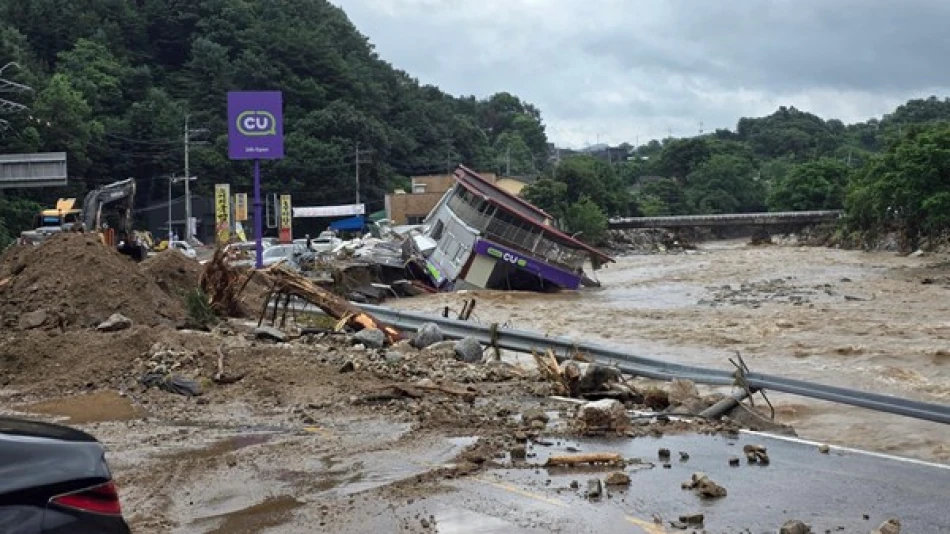
South Korea Grapples with Deadly Landslides and Floods: Casualties Mount in Severe Weather Crisis
South Korea Faces Deadly Weather Whiplash as Floods Give Way to Extreme Heat
South Korea's latest natural disaster has claimed 17 lives and left 11 missing after four days of torrential rainfall triggered devastating landslides and floods, forcing over 13,000 people from their homes. The crisis underscores the country's growing vulnerability to extreme weather events that swing rapidly between deadly floods and scorching heatwaves.
Escalating Casualty Count in Gapyeong
The death toll rose sharply on Sunday following a catastrophic landslide in Gapyeong city, where two more victims were confirmed dead and five others remain missing. Dramatic rescue footage released by emergency officials showed helicopter evacuations and swift-water rescues near camping areas as rivers turned into raging torrents, sweeping away vehicles and infrastructure.
The scale of displacement—over 13,000 evacuees—represents one of the most significant weather-related population movements in South Korea in recent years, highlighting the intensity of this weather system that began Wednesday.
Presidential Response and Infrastructure Concerns
President Lee Jae-myung ordered rapid damage assessments and expedited disaster zone designations to accelerate state support. This swift governmental response reflects lessons learned from previous disasters, including the 2020 monsoon season that killed dozens and caused billions in damage.
The president's immediate intervention signals recognition that South Korea's infrastructure—despite significant modernization—remains vulnerable to increasingly unpredictable weather patterns that characterize climate change in East Asia.
Weather Extremes: From Floods to Heatwave
The government meteorological agency forecasts an abrupt end to rainfall on Sunday, followed immediately by a heatwave—a dramatic weather swing typical of South Korea's increasingly volatile climate patterns. Heavy rains that initially pummeled southern regions moved northward overnight, spreading the impact across broader areas.
This rapid transition from flooding to extreme heat poses additional challenges for emergency responders and displaced populations, who must now prepare for entirely different weather-related risks within days.
Regional Context and Growing Climate Risks
South Korea's experience mirrors broader regional trends across East Asia, where countries like Japan and China have faced similar extreme weather volatility. The Korean Peninsula's geography—mountainous terrain combined with rapid urbanization—creates particular vulnerability to flash flooding and landslides.
Economic implications extend beyond immediate disaster costs. Agricultural regions affected by flooding face crop losses just as the growing season peaks, while the tourism sector suffers disruption during peak summer travel periods. The camping area rescues highlight risks to South Korea's popular outdoor recreation industry.
This disaster reinforces the urgency of climate adaptation measures across Northeast Asia, where traditional monsoon patterns are becoming increasingly unpredictable and intense. For South Korea, balancing rapid economic development with climate resilience represents a critical challenge as extreme weather events become more frequent and severe.
Most Viewed News

 Layla Al Mansoori
Layla Al Mansoori






